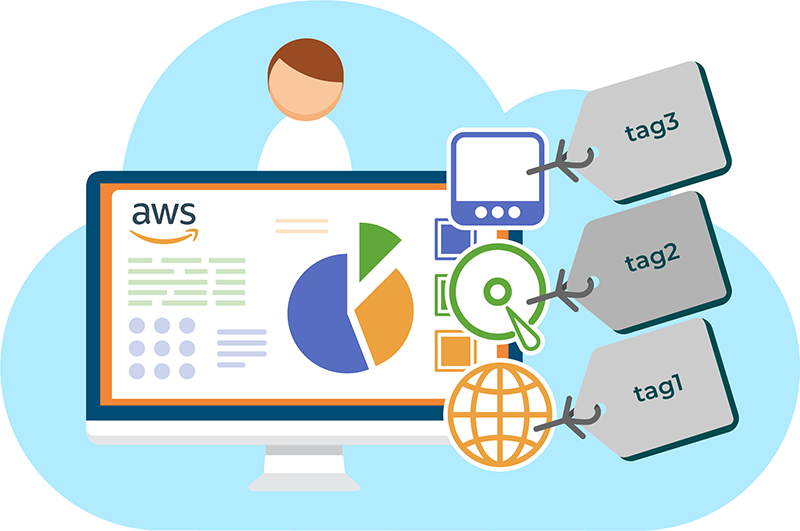AWS Tagging Strategies
AWS Tagging Strategies

Tags are metadata that you can assign to AWS resources such as EC2 instances, S3 buckets, and RDS databases. Tags are key-value pairs that allow users to label resources with information that is relevant to their business needs. Users can assign multiple tags to a resource, and tags can be searched, filtered, and used for cost allocation.
Benefits of AWS Tagging
Resource Management: Tags make it easy to manage resources by allowing users to filter and search for resources by tags. This makes it easy to find resources and keep track of them.
Cost Allocation: Tags allow users to allocate costs to the correct department or business unit. This helps businesses to accurately track and allocate costs, making it easier to manage budgets.
Security: Tags can be used to control access to resources. For example, a tag can be used to grant access to a specific group of users. This helps to ensure that only authorized users can access resources.
Compliance: Tags can be used to ensure compliance with regulatory requirements. For example, a tag can be used to ensure that only resources that meet certain compliance requirements are used.
Tagging Strategies
Tags for resource organization
Using tags is an effective method to arrange AWS resources. By configuring tags to be displayed with resources, you can easily search and filter resources based on tags. Additionally, AWS Resource Groups service allows you to create groups of AWS resources by utilizing one or more tags or portions of tags. By utilizing Resource Groups and Tag Editor, you can gather and visualize data for applications that comprise multiple services, resources, and Regions in one central location.
Tags for cost allocation
In this strategy, tags are used to allocate costs to the correct department or business unit. For example, a company may have multiple departments such as marketing, sales, and support. Each department can use a unique tag, making it easy to track and allocate costs to the correct department.
Tags for automation
During automation activities, it is common to use tags that are specific to the resource or service in order to filter resources. Automation tags are used to control which automated tasks are performed or to identify specific versions of resources that need to be archived, updated, or deleted. For instance, automated scripts can be configured to start or stop EC2 instances during non-business hours to reduce costs. In this scenario, you can use EC2 instance tags to exclude certain instances from the automation. Similarly, snapshot tags can provide an additional search criterion to scripts that identify and remove stale, out-of-date, or rolling EBS snapshots.
Tags for access control
IAM policies provide support for tag-based conditions, enabling you to restrict IAM permissions based on specific tags or tag values. For instance, you can configure IAM user or role permissions with conditions that limit EC2 API calls to specific environments (e.g., development, test, or production) based on their respective tags. Similarly, tag-based conditions can be used to restrict API calls to specific VPC networks. It is important to note that support for tag-based, resource-level IAM permissions is specific to each service. When using tag-based conditions for access control, it is crucial to define and restrict who has the ability to modify the tags.
Resource tagging is a powerful feature that allows users to easily manage and organize resources. By using a tagging strategy, businesses can take advantage of the benefits of tagging, including resource management, cost allocation, security, and compliance. With the right tagging strategy in place, businesses can streamline their operations and optimize their use of AWS resources.
